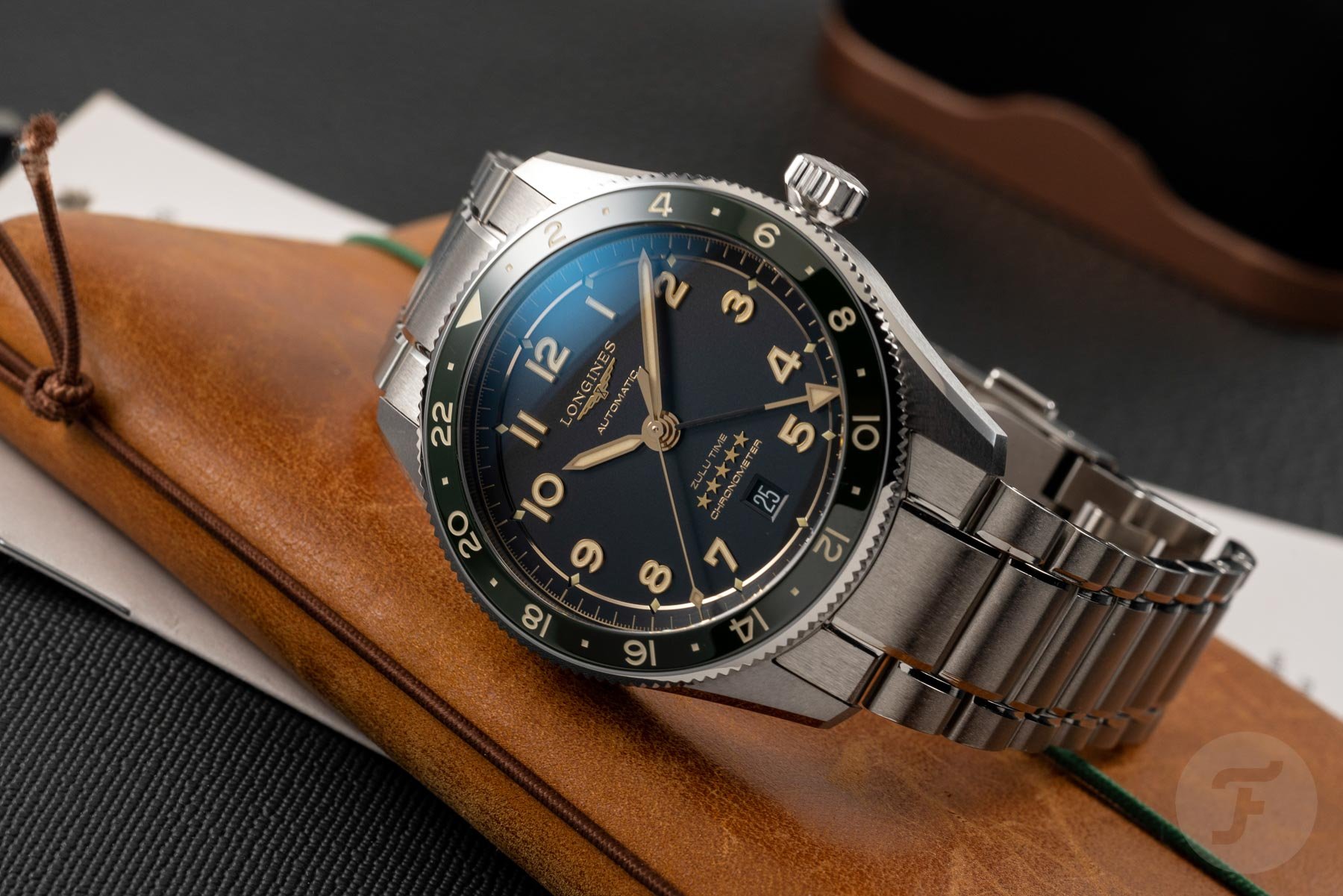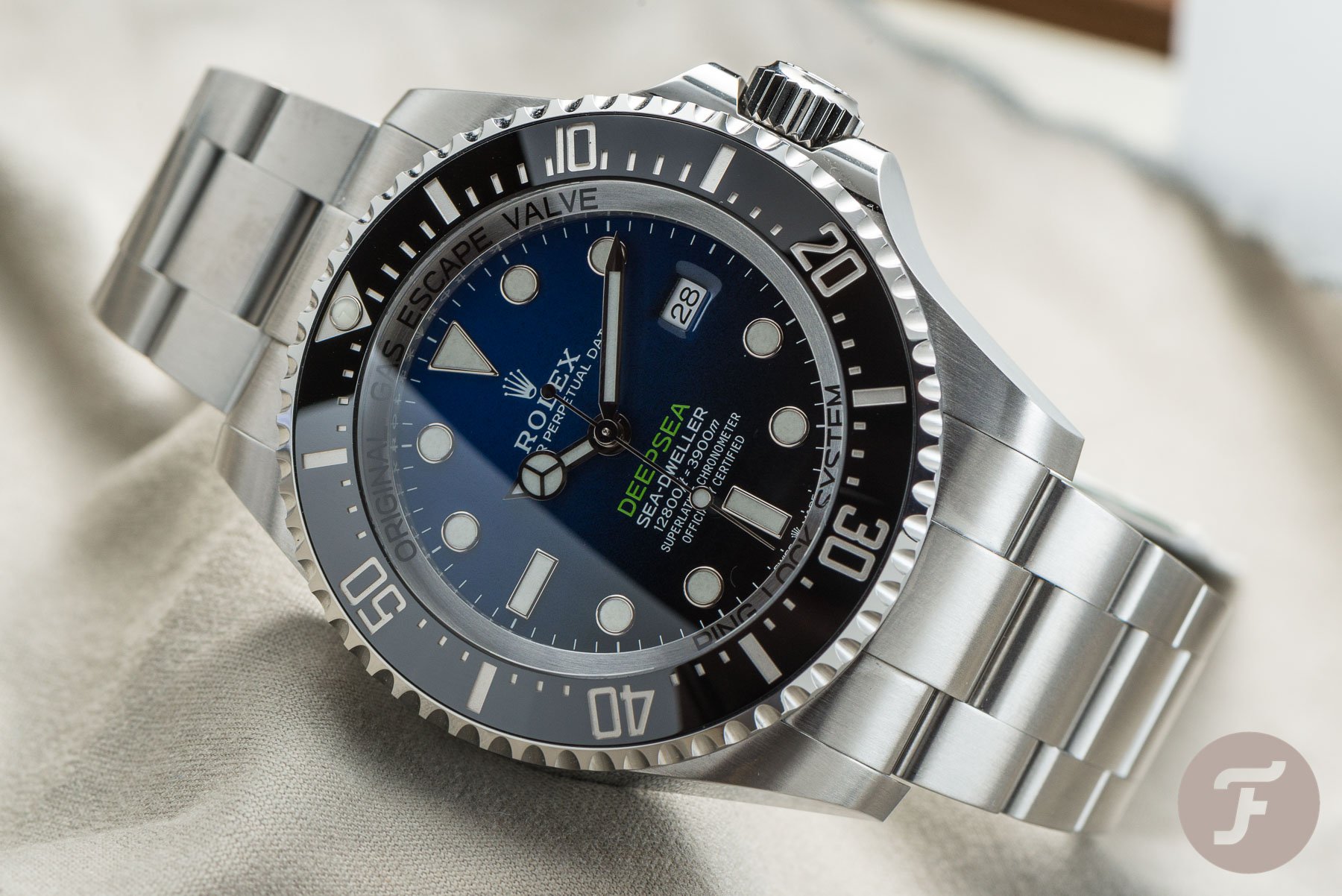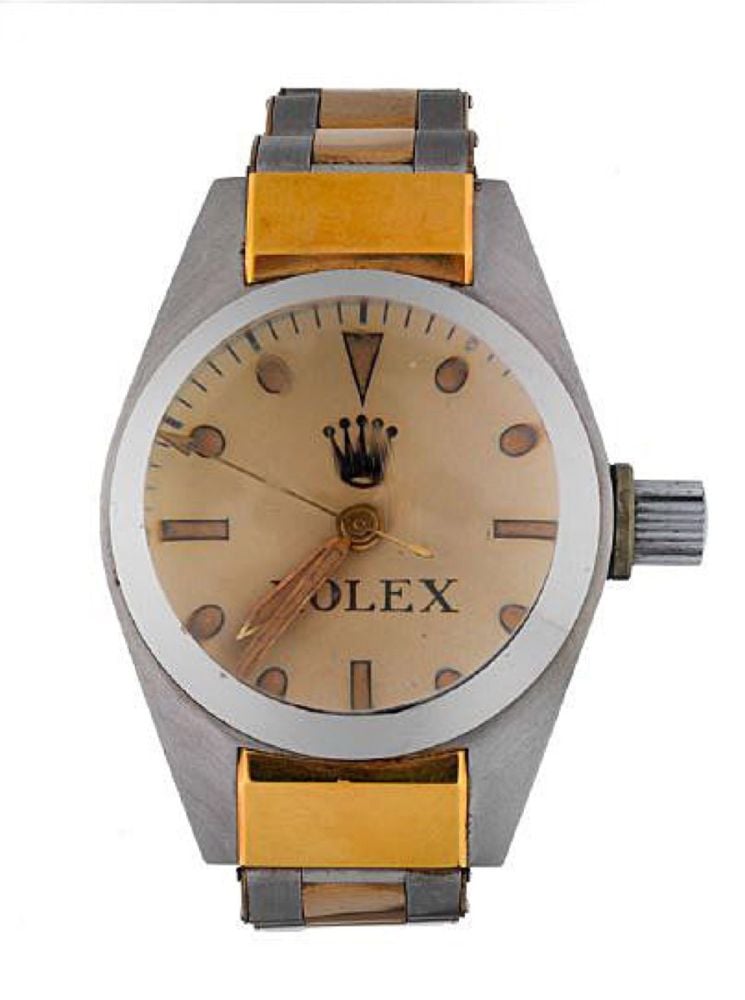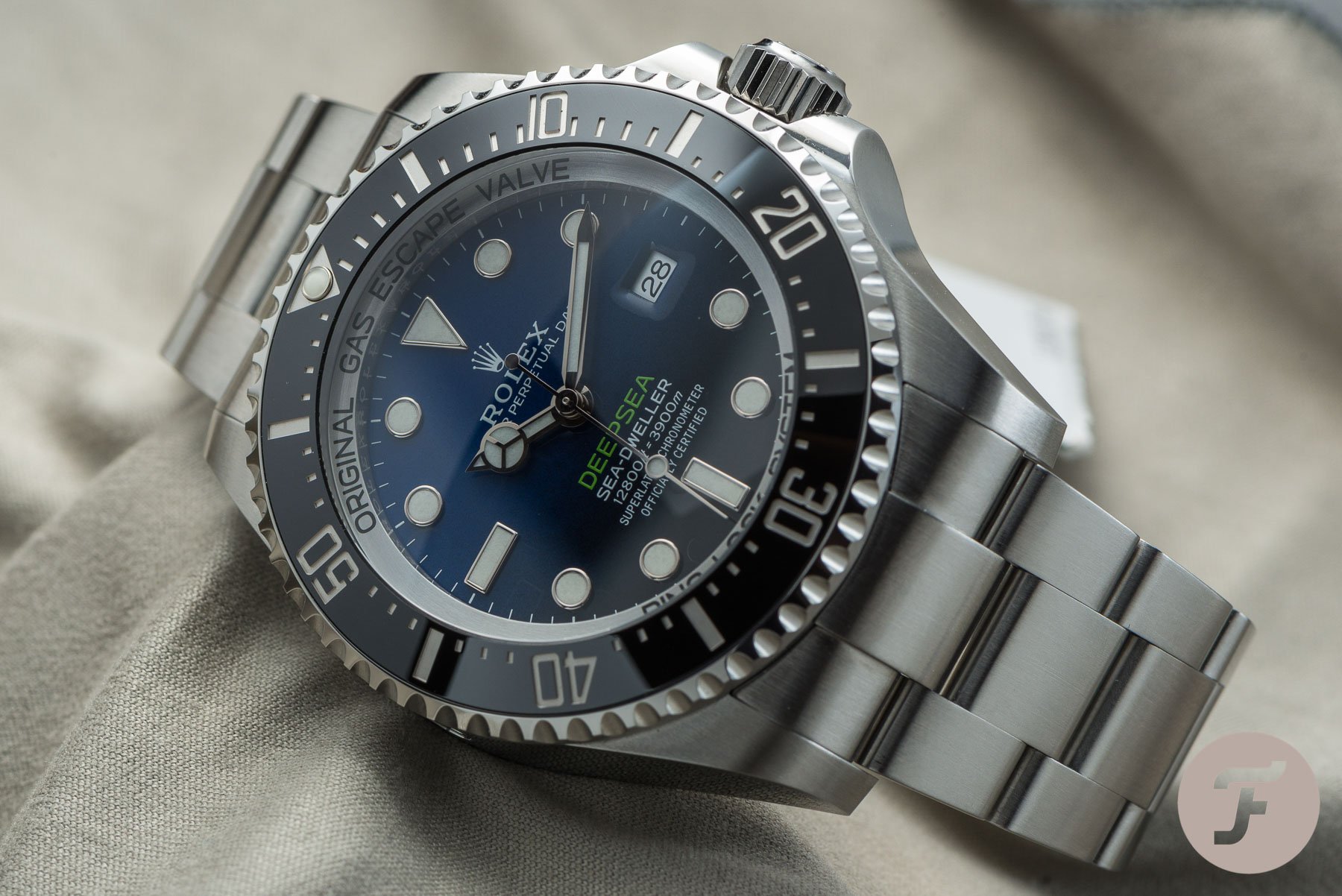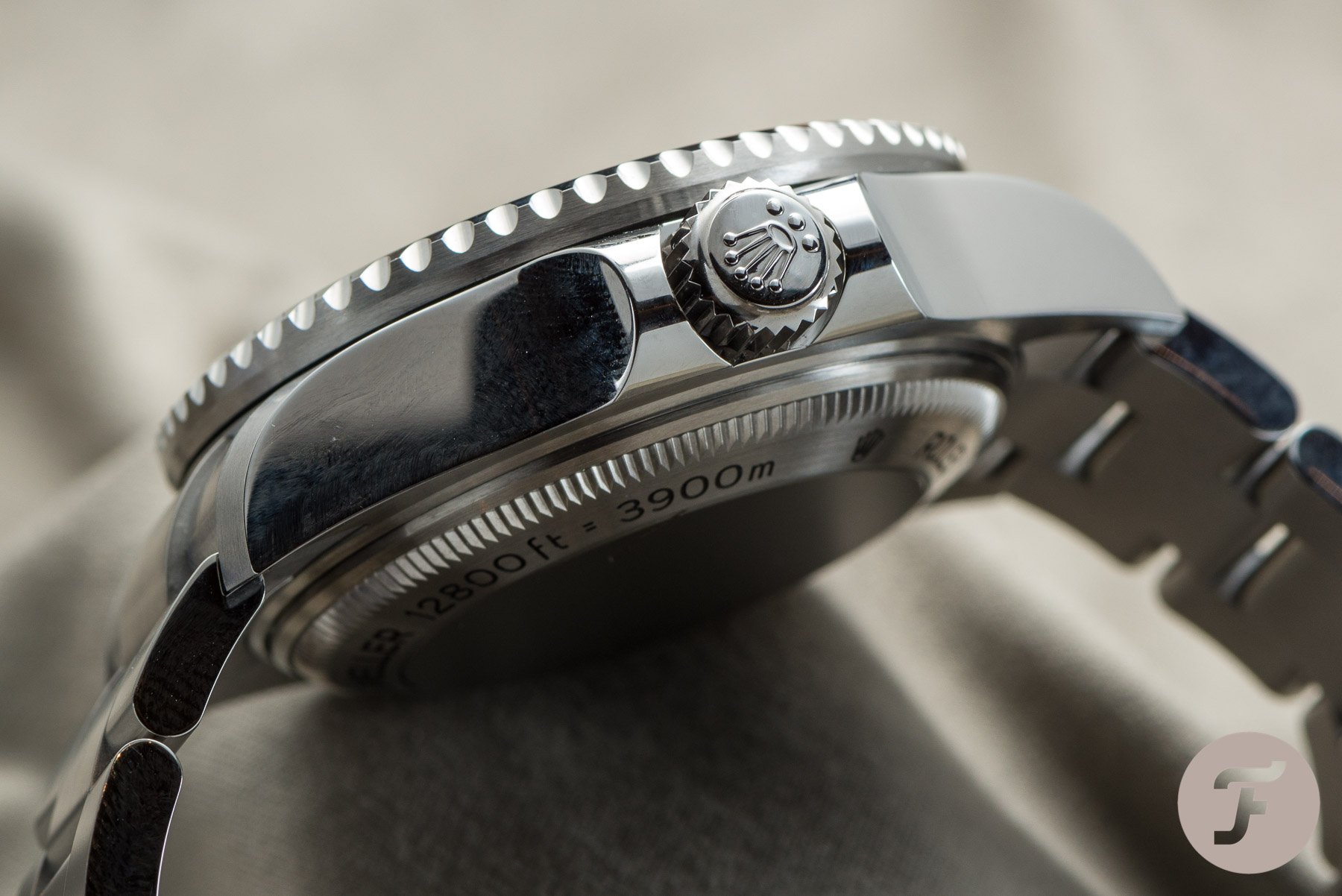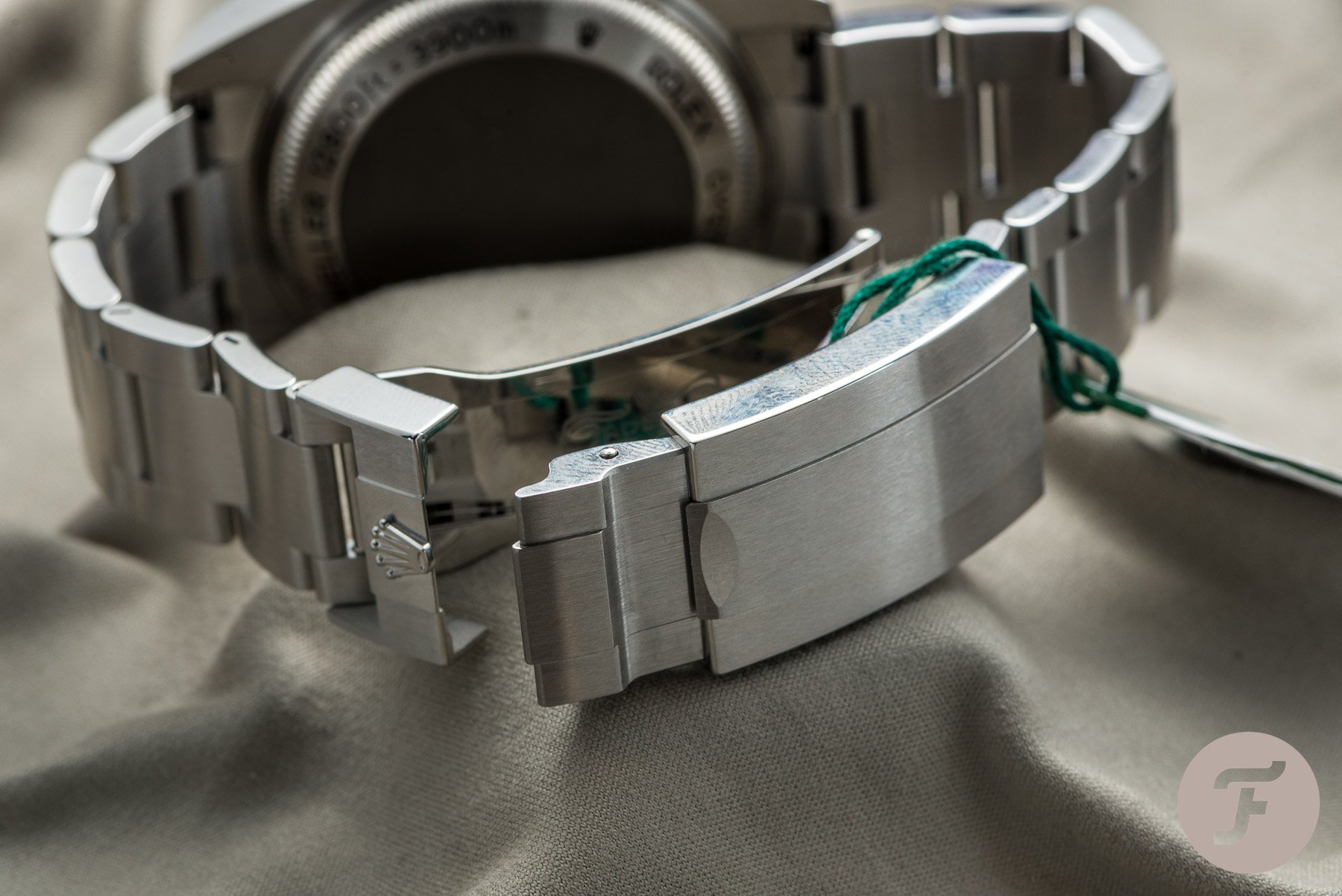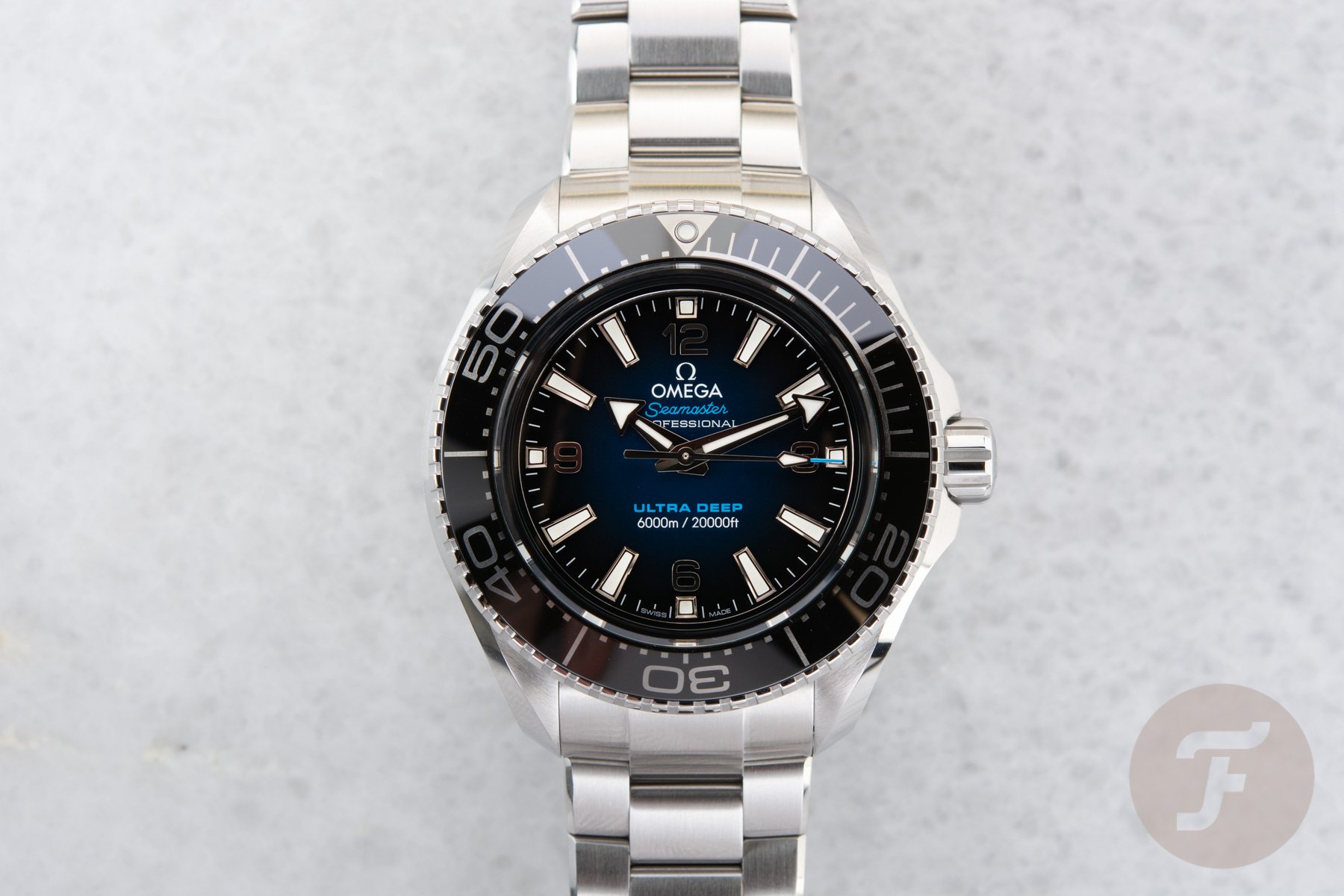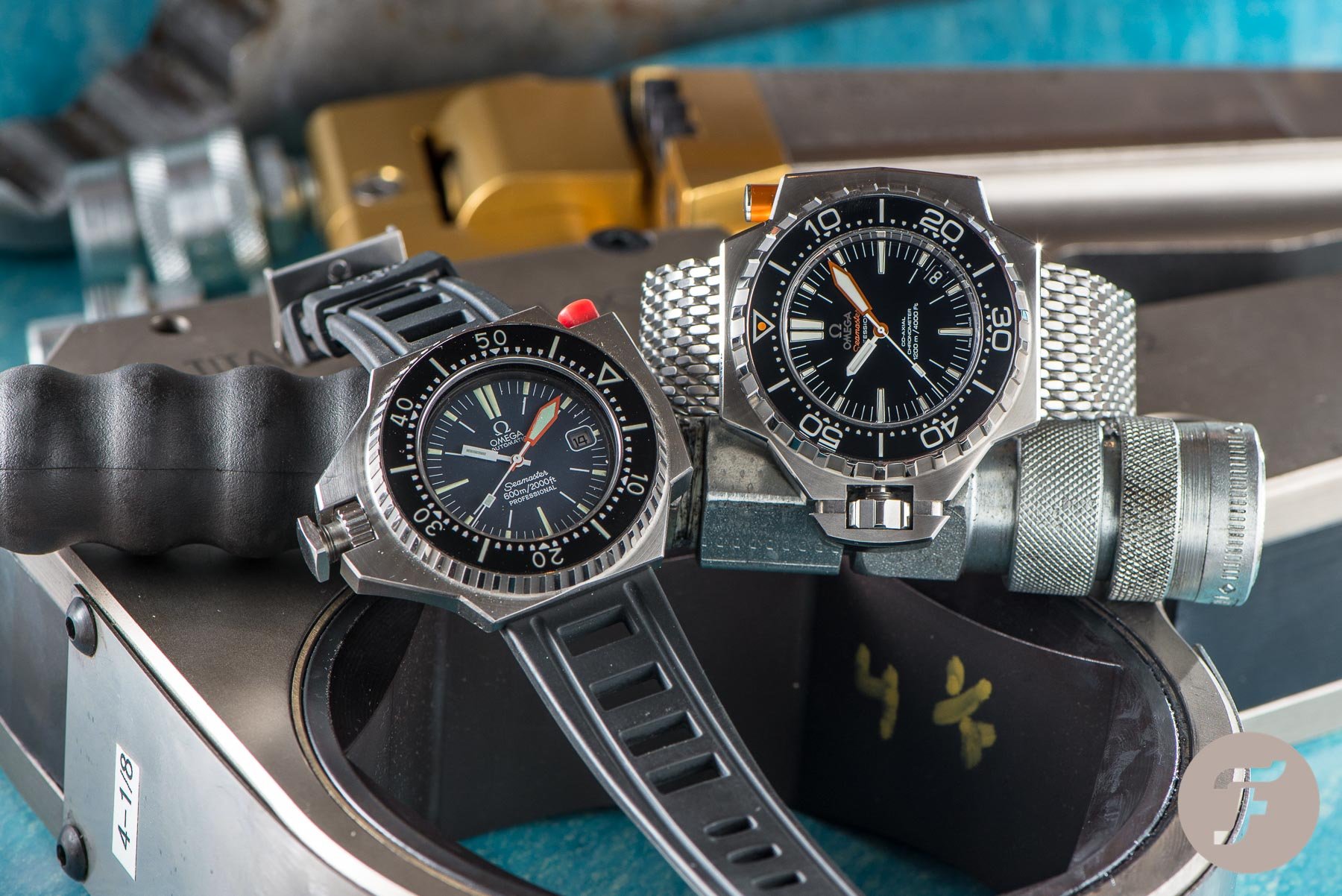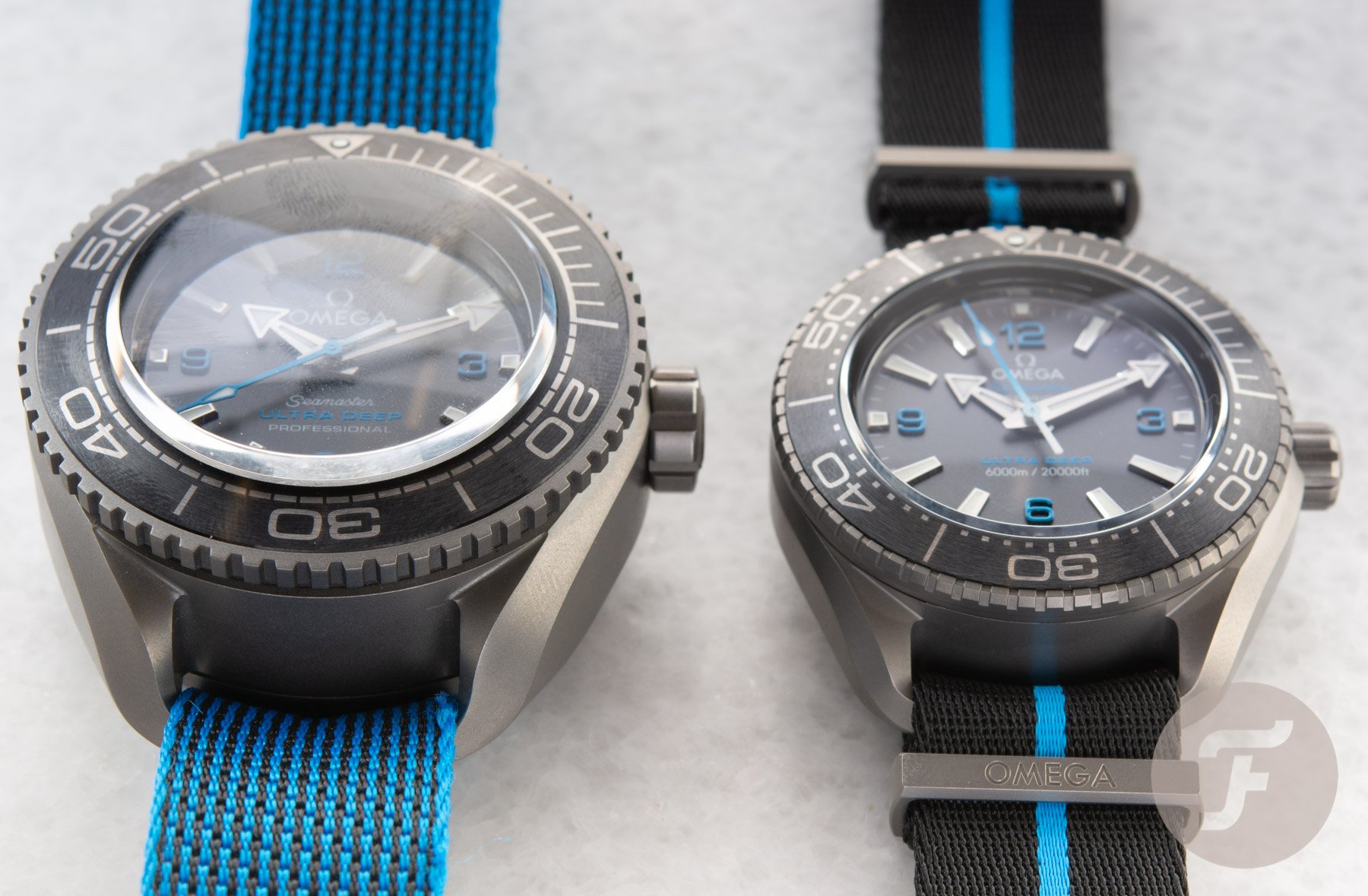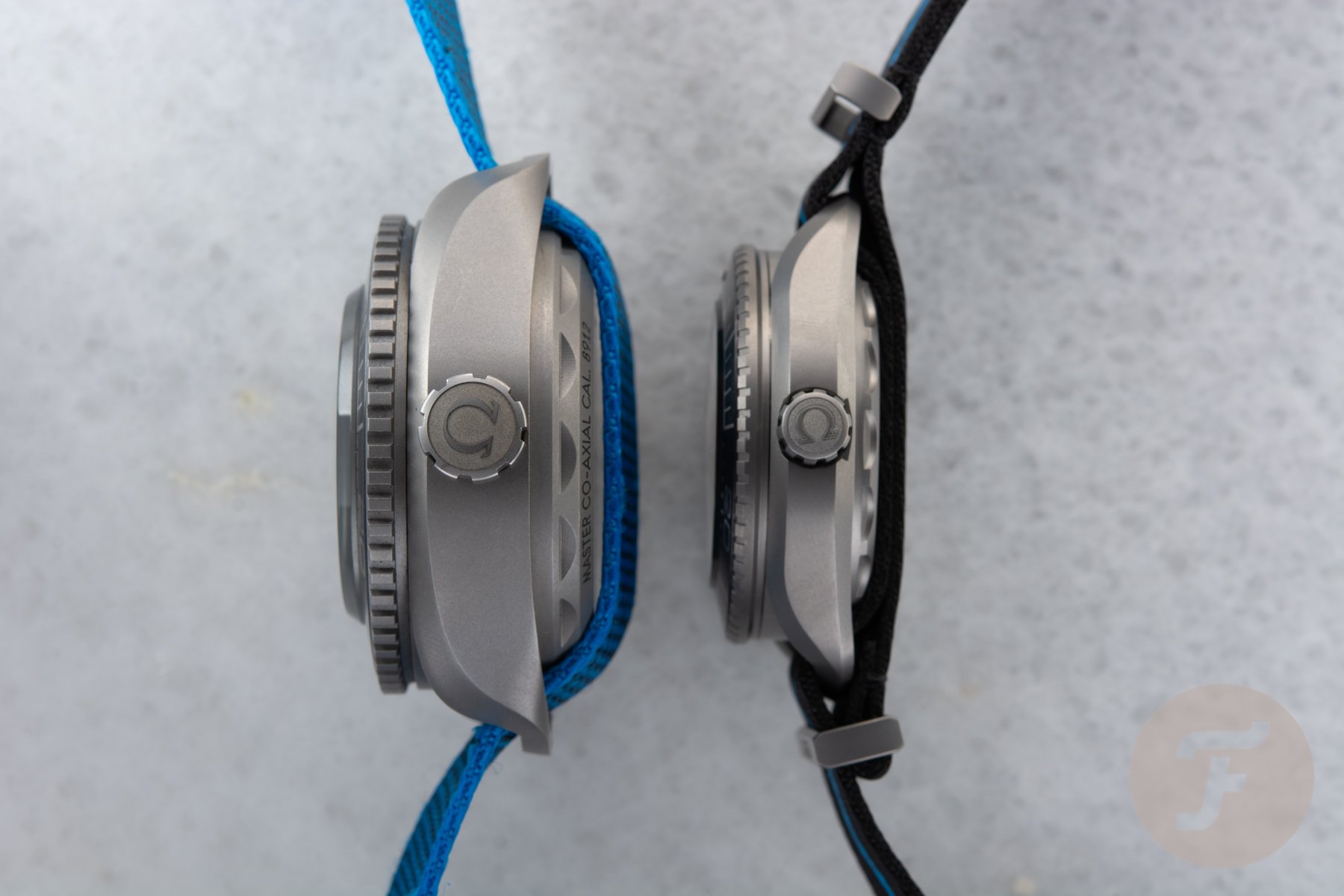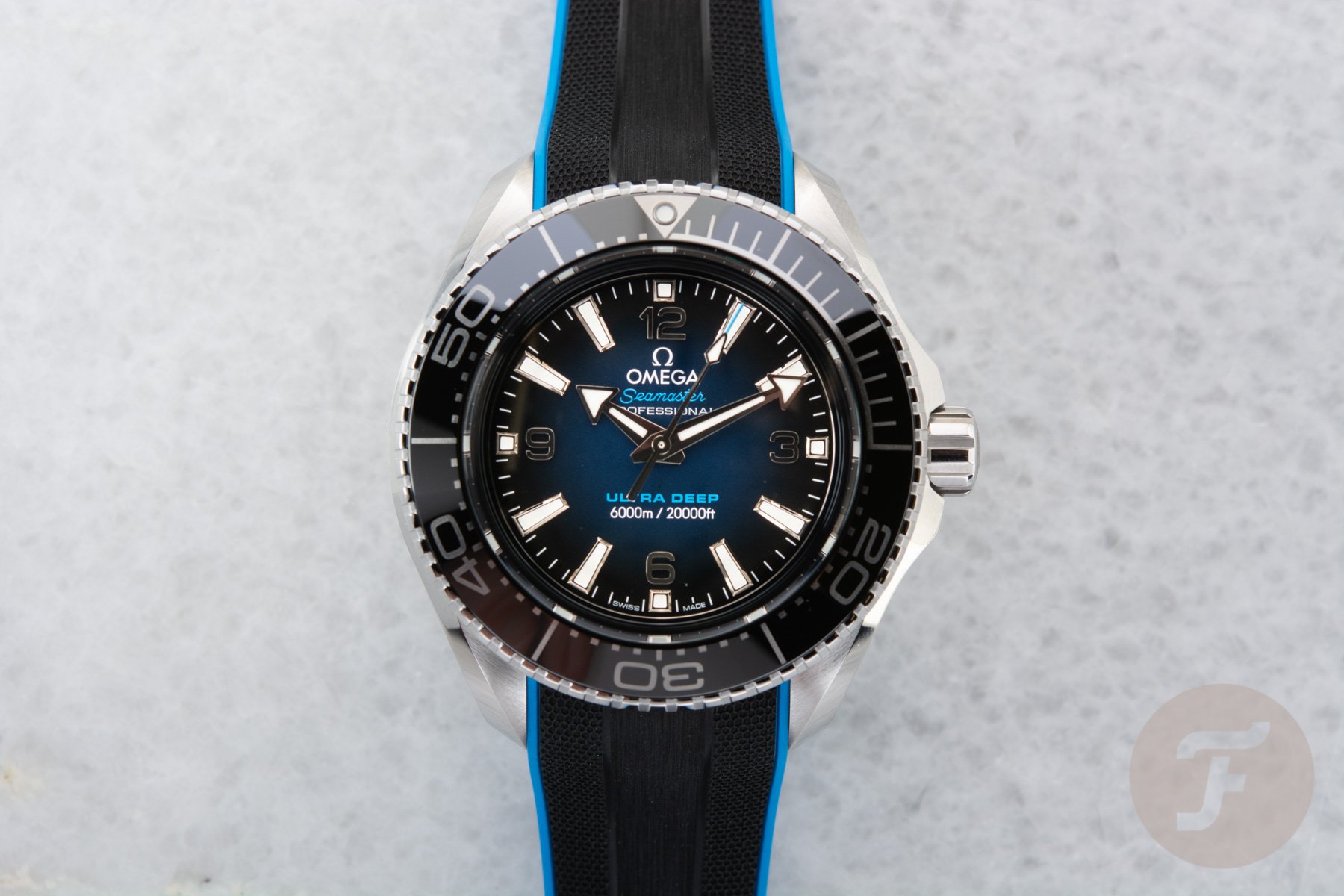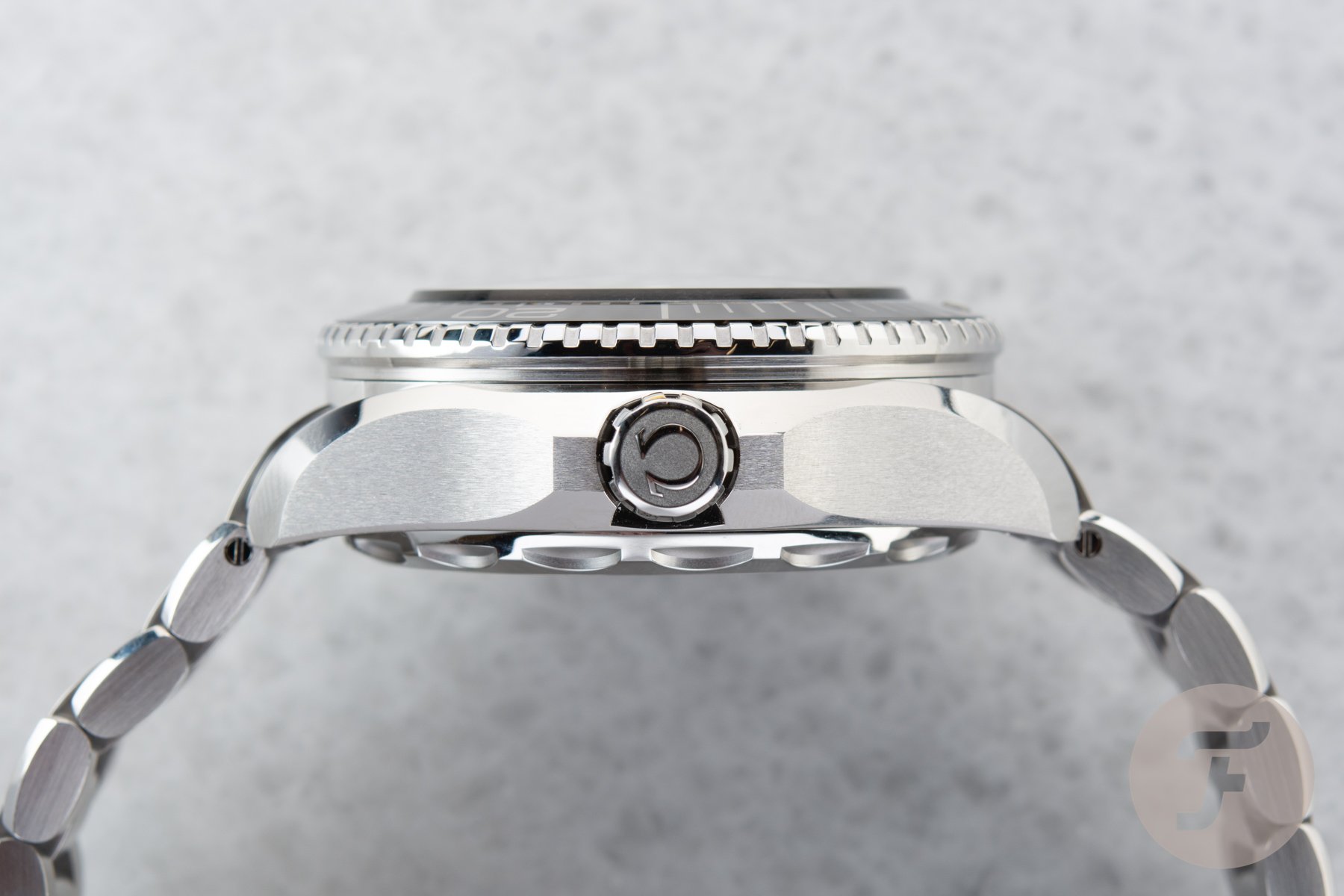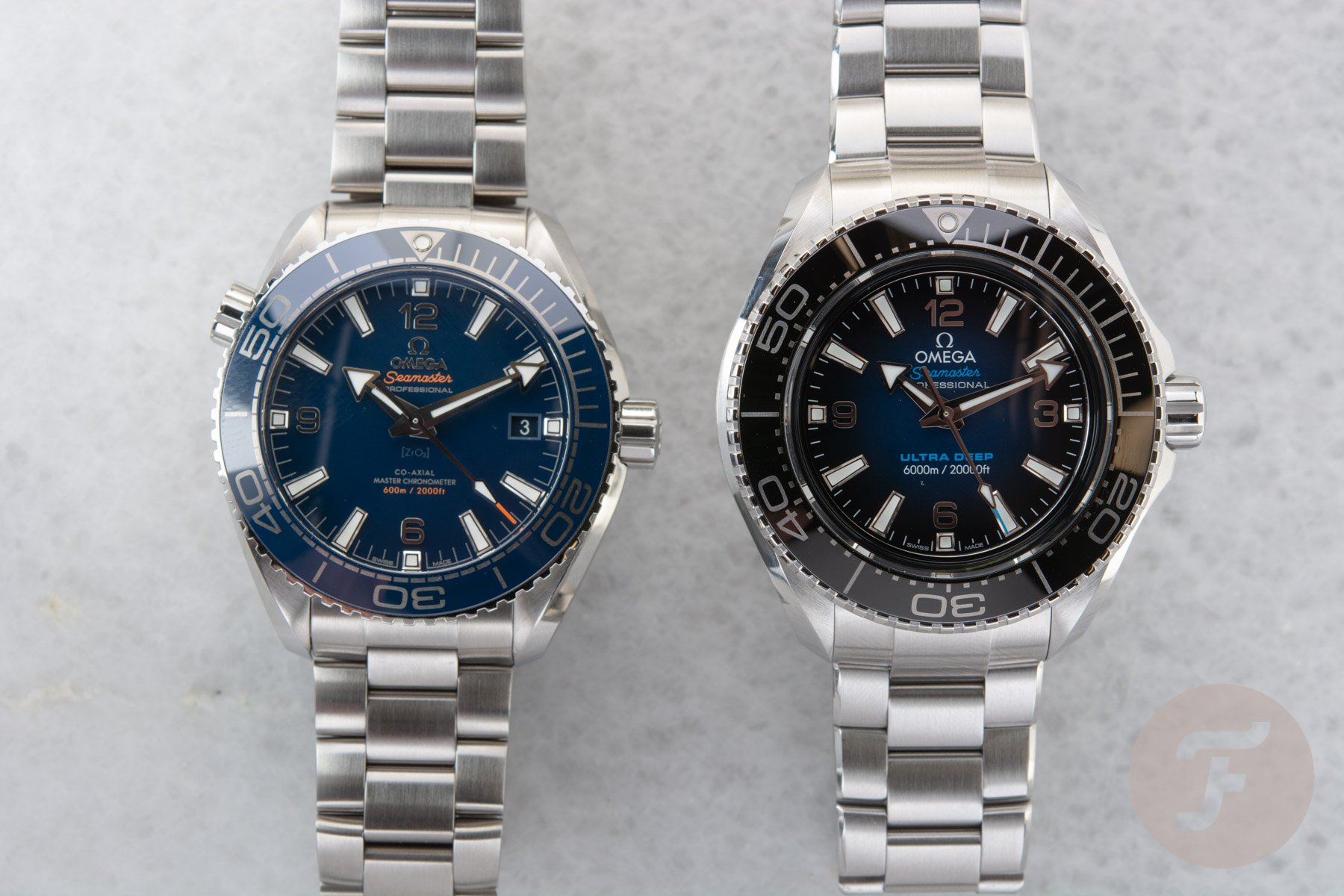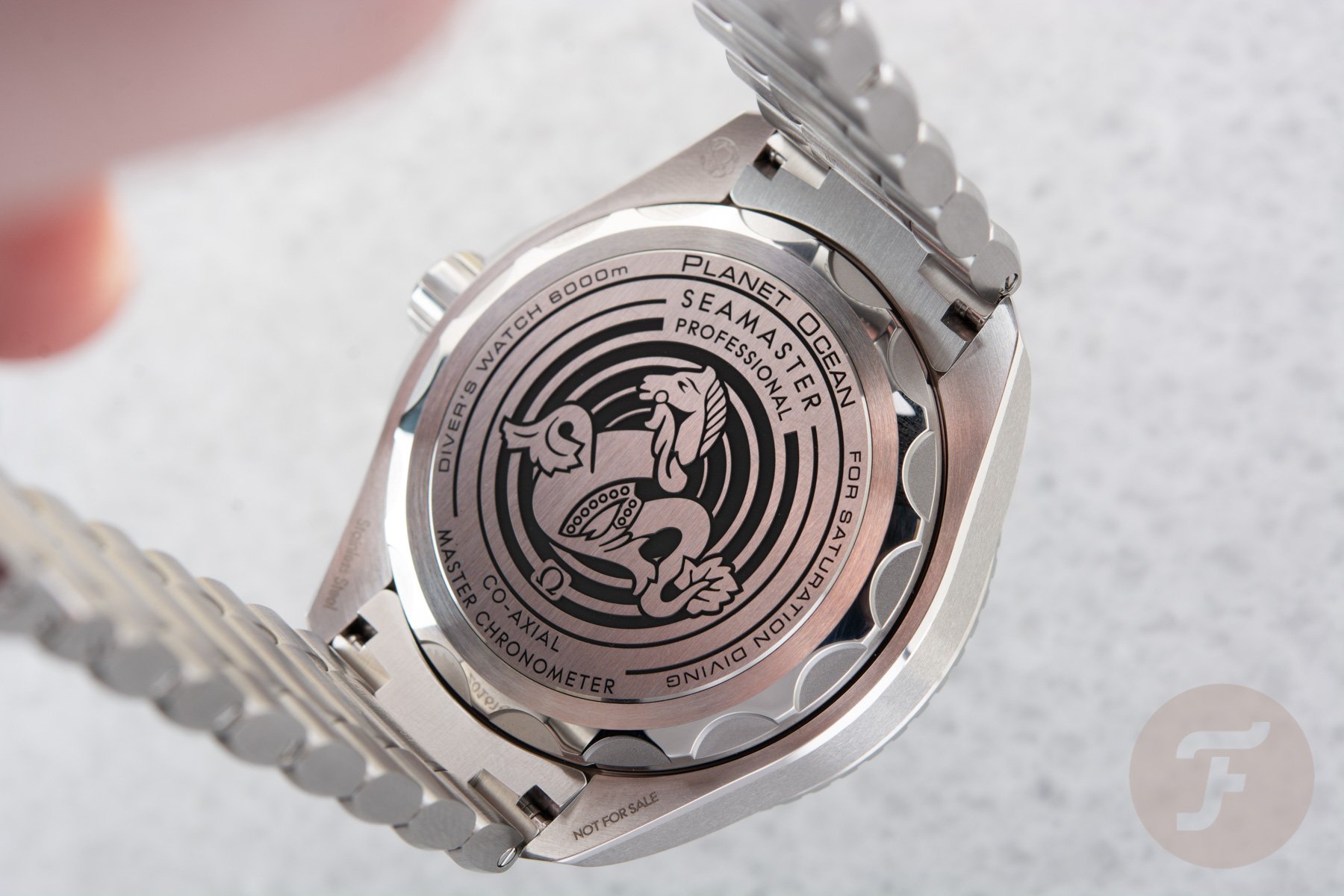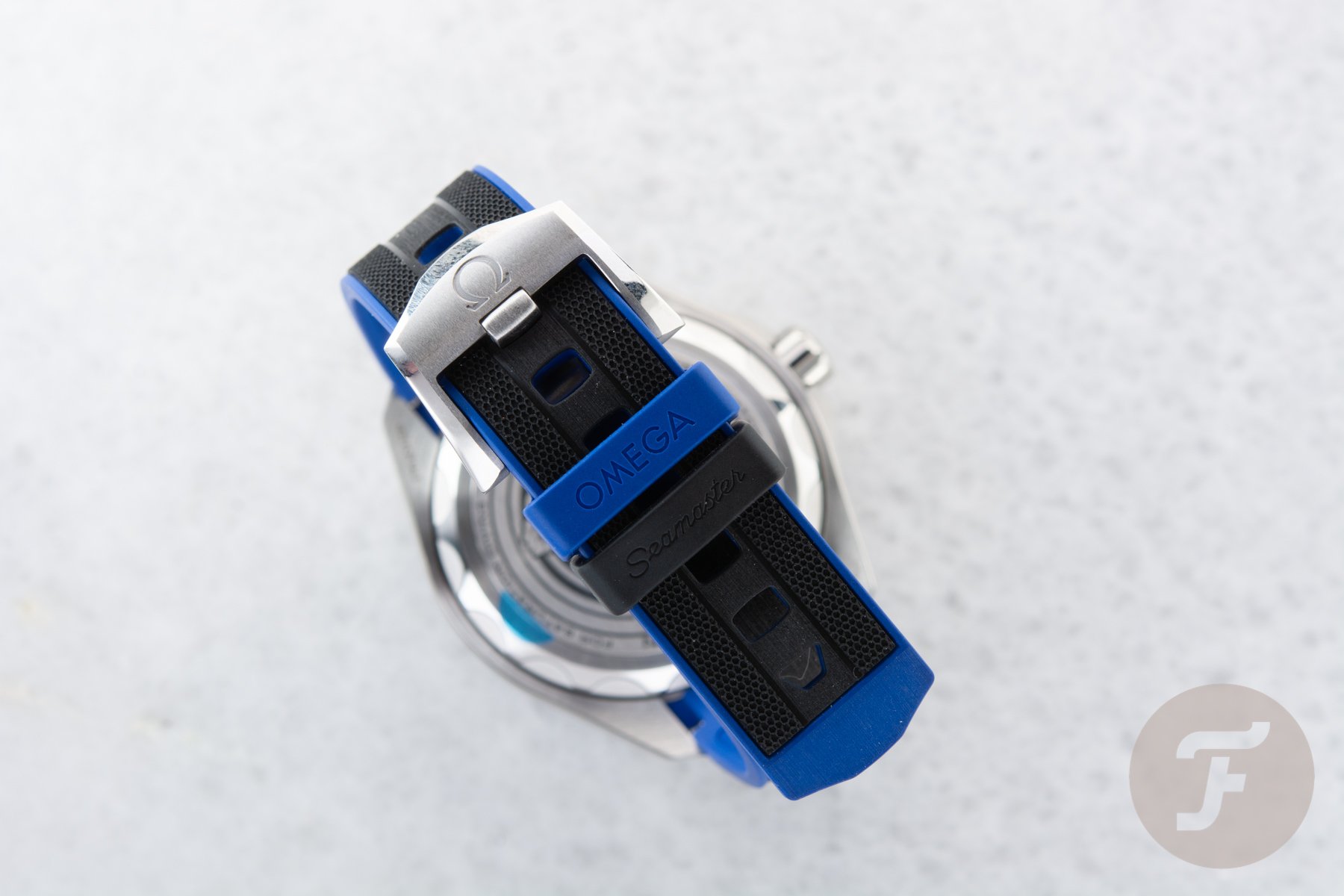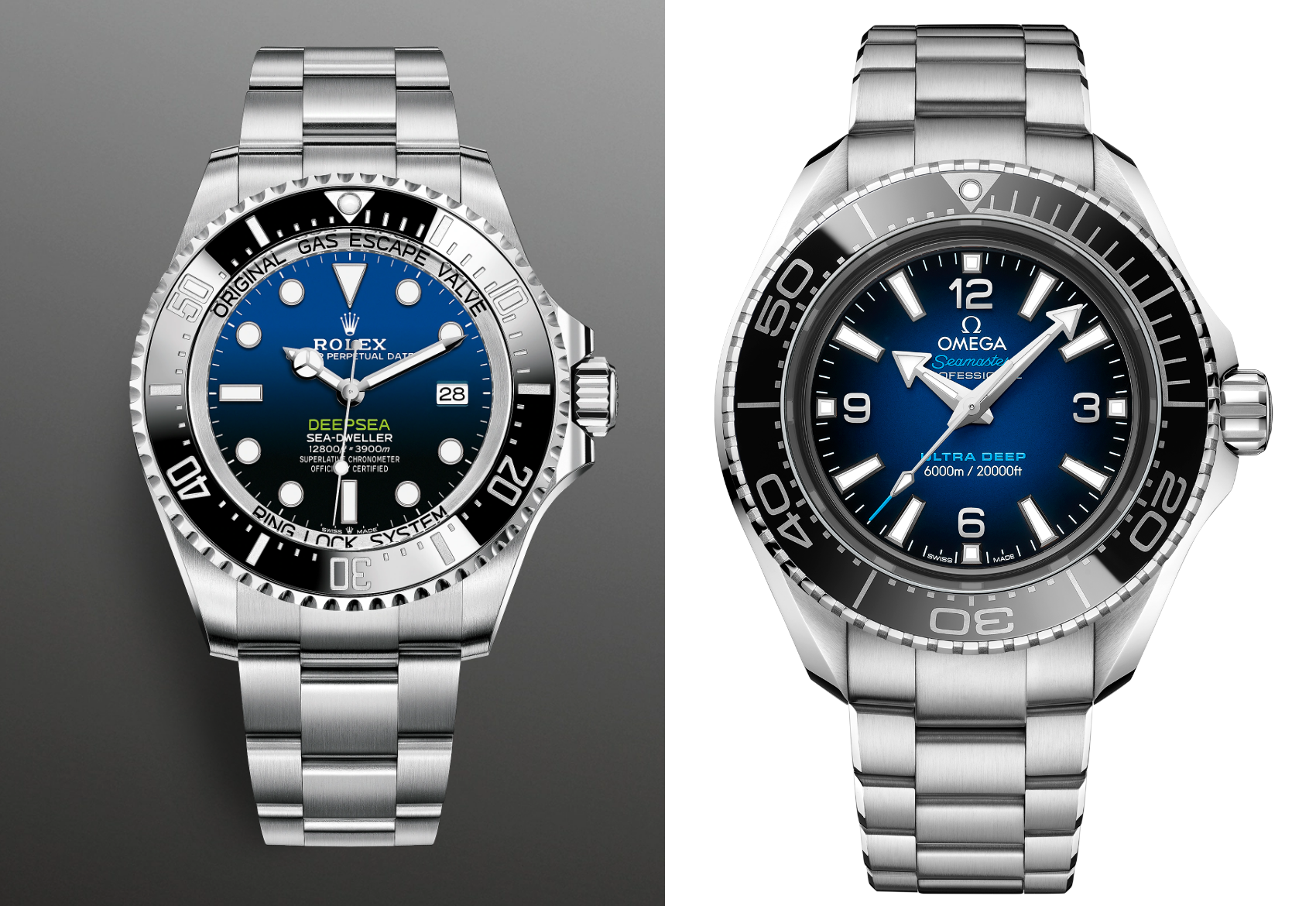Sunday Morning Showdown: Rolex Deepsea Sea-Dweller Vs. Omega Seamaster Planet Ocean Ultra Deep
We’re back again for another Sunday Morning Showdown! Last week was a titanic battle. But do you know where the Titanic is? It’s 3,800 meters deep and 690 kilometers southeast of Newfoundland (thanks, Wikipedia). Today’s watches both comfortably reach that depth and beyond. For comparison, the Longines from last week is only capable of reaching 100 meters. The Rolex Deepsea Sea-Dweller and Omega Seamaster Planet Ocean Ultra Deep take the plunge even further than the Titanic. But which extreme diving watch is the one for you? Vote at the end and let us know your thoughts in the comments section.
Unlike other longstanding Rolex professional models, the Sea-Dweller has not enjoyed a continuous run throughout its history. Over fifty years, the Sea-Dweller has seen replacements, updates, and even occasional discontinuation. However, in recent history, the offshoot deepest-diving Deepsea model has come in a substantial 44mm case. The beefier case allows the Deepsea to reach depths of 3,900 meters. With its 904L Oystersteel case, black 120-click Cerachrom bezel with platinum deposits, Chromalight illumination, and an Oyster bracelet with Glidelock clasp, the Deepsea is packed full of tech. Not to be outdone, the Omega Seamaster Planet Ocean Ultra Deep takes it up a notch and claims a depth rating of 6,000 meters — nearly double the extremities of the Rolex Deepsea!
Previously, on Sunday Morning Showdown…
But before we get ahead, let’s focus on last week. Nacho and the Longines Spirit Zulu Time GMT faced off against Jorg and the Tudor Black Bay GMT. To say it was a shocking result is an understatement. The Longines thrashed the Tudor with 62% of the votes. Will today be another upset for Jorg? This time, he’s representing the Omega with Ben backing the Rolex.
Ben: Rolex Deepsea Sea-Dweller ref. 126660
The reputation of the Deepsea is that of a thoroughly modern Rolex in design and construction. While the Deepsea Sea-Dweller may be a contemporary execution, the concept of a watch delving beyond the abyss stretches back to the 1960s. As the US Navy was gearing up for its Project Nekton expedition, Rolex took the opportunity to develop its Deep Sea Special No. 3 “wrist” watch. This particular mission was to reach the Challenger Deep within the Mariana Trench. This spot in the Pacific Ocean, southwest of Guam, is considered the deepest ocean floor in the world. By procuring the Trieste bathyscaphe from Swiss oceanographer Auguste Piccard, the US Navy made further modifications to achieve the feat. The word “Bathyscaphe” stems from the Ancient Greek meanings for deep (bathys) and boat (scaphe).
The purpose of the watch was limited. It was neither on the wrists of Jacques Piccard (son of the boat’s designer Auguste Piccard) nor US Navy Lieutenant Don Walsh. Neither was the watch in the vessel’s cabin. Instead, Rolex conducted a real-world test of its Deep Sea Special’s endurance by strapping it to the outside of the Trieste. Piccard and Walsh successfully navigated the Trieste through total darkness to its target depth. Alongside, the ludicrously thick and doming crystal of the Deep Sea Special withstood six tonnes of pressure per square inch at those depths. As Rolex said in 1961, “This Rolex watch spent 20 minutes on the Pacific Ocean floor, 35,797 feet down, and came up ticking!” In 2008, almost fifty years after accomplishing the deepest diving feat in history with the Deep Sea Special, Rolex gave us a new version of the Sea-Dweller.
Wilsdorf’s curtain closer
The 2008 Rolex Deepsea Sea-Dweller takes inspiration from the pioneering era of ocean exploration. Perhaps even more so, the Deepsea is a dedication to Rolex’s founder, Hans Wilsdorf. Wilsdorf’s involvement with the Trieste mission was one of his final collaborations at the helm. A few months later, in 1960, he would pass away, leaving a longstanding legacy. The Deepsea is a spiritual successor of the Deep Sea Special but closely follows the lines of the Sea-Dweller and, in turn, the Submariner. On the face of it, you may assume the Deepsea only expands the Sea-Dweller’s dimensions to handle the pressures at 3,900 meters. Yet, running the circumference of the dial is the patented Ring Lock System. It doesn’t seem like much, but this visible titanium ring extends inside the case in a bucket shape and sits flush to the case back.
This connection is almost an evolution of the monobloc concept where all components are front-loaded into a solid case and lug platform. Instead, the design allows the inner section to compress as the pressure increases, similar to a “super compressor” watch. Yet, the system does not involve the entire case, only the crystal and Ring Lock System. It’s a very clever solution and employs a material seldom seen in Rolex watches. Titanium, or “RLX Titanium” as Rolex calls it, is rare on Rolex watches. A few other examples share the material, including the metal blades within the Oysterflex bracelet. British sailor Sir Ben Ainslee is also testing a titanium prototype Rolex Yacht-Master “no date”, but that is not a production watch. Nevertheless, titanium is a core component of what makes the Deepsea resilient to extreme depths, possibly due to its strength and lightness.
James Cameron and the D-Blue Deepsea
Following the Deepsea Sea-Dweller, Rolex invited the press and partners to a special event in 2014. I remember that there was a lot of speculation and excitement at the time. Rolex had been building anticipation for what it was going to release next. After the unveiling, however, many left disappointed that it was just the same six-year-old Deepsea with new a blue-to-black gradient dial, mimicking the loss of light in the abyss. The press also complained it was a waste of time and money for a mere dial change. Rolex perhaps picked up on this, and we now only get the annual showing at Watches and Wonders (formerly, at Baselworld). Nowadays, we would crave some fanfare, however subtle, for a new Rolex timepiece at other points of the year. So nice going, watch journalists of 2014! This is why we can’t have nice things. The new “D-Blue” was more than a new paint job.
Two years prior, Canadian filmmaker and explorer extraordinaire James Cameron piloted the Australian-built Deepsea Challenger submersible for the second manned mission to the Challenger Deep. Cameron was the first person to achieve a solo dive to the deepest part of the ocean. He was shy of the Trieste’s 10,916m depth in 1960 by eight meters. However, the submersible spent three hours capturing the ocean bed with 3D cameras, over two and a half hours more than the Trieste. This meant the Rolex Deepsea Challenge affixed to the sub’s robotic manipulator arm had to withstand and continue functioning for far longer than its forebear in 1960. Luckily, the 51mm × 28.5mm non-production timepiece is certified to 12,000 meters — deeper than any ocean on this planet. But there is a series of three specialist Deepsea Challenge watches just in case.
Three upgrades in eight years
The 2014 Deepsea is a slightly thinner production version than Cameron’s watch. The Ring Lock System and innovative helium escape valve persist from the 2008 Deepsea, but the blue dial fading to black signifies the mission the crew undertook. Also, the “DEEPSEA” logo appears below the center pinion instead of above and is in “Kawasaki” green to match the submersible’s paint scheme. The 2018 reference 126660 I am repping in this showdown somewhat alters the dimensions of the 2014 reference 116660. It’s still 44mm × 17.7mm and 51mm lug-to-lug. But the bracelet widened from 20mm to 22mm between the lugs and tapers to 18mm towards the clasp. The more proportionate bracelet means the watch isn’t as top-heavy, although it’s still a handful to wield. Overall, it’s surprising that it’s only 2.5mm thicker than the regular Sea-Dweller considering it achieves over double the Sea-Dweller’s 1,220m rating.
Most of that case height is thanks to the impressive 5.5mm-thick crystal. This year, reference 126660 made way for reference 136660. The new 2022 model makes fine-tune adjustments that, on the surface, are hardly noticeable. The Deepsea is still a 44mm 904L Oystersteel Rolex watch. It is still powered by the manufacture caliber 3235 with a 70-hour power reserve and superlative accuracy standards of ±2 seconds per day. Now, however, that same movement incorporates a more significant date disc for a broader window on the dial. The larger aperture makes up for the lack of cyclops magnification on the crystal due to the thickness and performance at the certified depths. Other than some subtle sculpting around the lugs and updated engravings on the titanium case back, the references are quite similar. However, the flip-out diver’s wetsuit extension is no longer on the latest Deepsea. This watch carries a price of €13,500.
This year, Omega launched an arguably similar design for its O‑MEGASTEEL Planet Ocean Ultra Deep. Here’s Jorg to explain how it came to be and why it’s his choice.
Jorg: Omega Seamaster Planet Ocean Ultra Deep
O-MEGASTEEL? RLX Titanium? Both Omega’s and Rolex’s marketing teams certainly enjoy injecting brand names into proprietary metals. It’s an exciting topic for the future, but that’s not why we are here today for this is the journey to the deep. These two watches take underwater performance to the extreme. But as impressive as the Rolex Deepsea is, this new Omega Ultra Deep lives up to its namesake in about every category. It holds the trump card over the Rolex when it comes to list price, and surprisingly, the Ultra Deep has a specific significance that the Deepsea cannot claim. Let’s find out why.
The story of the new Ultra Deep begins with the Five Deeps Expedition in 2019. But going back further, the Ultra Deep was not Omega’s first foray into deep-ocean exploration. Omega has an unwavering lineage of creating dive watches since the 1930s with the Omega Marine. Robert-Jan Broer’s article on the five best Seamaster models gave a glimpse of the brand’s aquatic legacy. For me, the most iconic waterproof Omega is the Ploprof. You can probably sense my adoration for the Ploprof here. The Ploprof’s outsized bezel lock and monobloc case are the epitomai of form following function.
The story of the Ultra Deep
While the new Ultra Deep aims for a more conventional case layout than the Ploprof, it does so in the most jacked-up way possible. The basic structure of the regular-production Ultra Deep stems from the specialist tool piece that endured the Five Deeps Expedition. Led by renowned explorer Victor Vescovo, the Five Deeps Expedition set the goal of reaching the depths of each of the world’s five oceans. Accompanying Vescovo during the manned descents in the DSV Limiting Factor was the Omega Seamaster Planet Ocean Ultra Deep Professional. Like the Deepsea, the timepiece sat outside the submersible. During the fourth and penultimate dive of the mission, Vescovo broke the world record for the greatest depth ever reached at 10,927 meters. As such, the tag-along Ultra Deep became a record-breaking watch by withstanding the enormous pressures in the Mariana Trench.
The entire expedition was an extraordinary achievement. To learn more about it, check out this write-up by Mike Stockton as well as his article on the unveiling of the three Ultra Deep watches in London. You can also check out Sky Sit’s article on the Five Deeps event, where we viewed the submersible. Despite the achievement, the 52.5mm × 28.5mm record-breaker is impossibly gargantuan. As fascinating as its accomplishment was for a relatively small object in comparison to the sub, to reach those depths, it’s still a behemoth on the wrist. And all that incredible technology was reserved for an unsalable item. Surely, we hoped, a production version was in the cards. Well, this year, we got our wish.
The Seamaster Planet Ocean Ultra Deep collection
Of the latest Seamaster Planet Ocean Ultra Deep collection, the titanium model has the closest resemblance to the 15,000m-rated model. Although the titanium is my favorite, the O-MEGASTEEL Ultra Deep is a comparable competitor to the Oystersteel Deepsea. The titanium and steel Ultra Deep share similar technology, but the matte finishing of the titanium case and the bezel set it apart from the steel’s brushed/polished mixture. The fixed “Manta Lugs” with the pass-through fabric strap make the titanium version much lighter. Even so, the 45.5mm × 18.12mm titanium case still tips the scales at 124g.
You can only imagine the mass when it comes to the O-MEGASTEEL Ultra Deep with a matching bracelet. At 51.95mm lug to lug, this is a big boy. The steel version does not come with the “Manta Lugs” but conventional protruding lugs for use with a bracelet or a strap. Options include black rubber straps with a tang buckle and blue or orange accents (depending on the colorway). The bracelet, which tapers from 22 to 18mm, comes with a sliding clasp and diver’s extension. A less noticeable difference between the steel and titanium models is the case shape. The steel case is symmetrical with crown protectors flanking the crown. In contrast, the titanium model features an asymmetrical case with a recessed crown. If I had to choose between the three available colorways and a strap or bracelet, I’d go with the full O-MEGASTEEL version with the blue/black gradient dial.
The magic of O-MEGASTEEL
So what is O-MEGASTEEL? Omega’s new alloy is harder than 316L and 904L steel at 300 Vickers. At the same time, the material is more elastic than regular steel, similar to titanium. As a result, the material will not deform at immense depths, which is handy as the Ultra Deep is water resistant to a whopping 6,000 meters. In controlled environments, METAS stress tests the watches to 7,500 meters to add a 25% safety margin. That is more than impressive if you ask me, and it makes Deepsea’s 3,900 meters a paddling pool in comparison.
O-MEGASTEEL also has a brighter hue than regular steel. It gives the watch a fresh, crisp look, as pictured above. The material is also nickel-free for hypoallergenic purposes. Additionally, it offers better resistance to corrosion than regular stainless steel. The Ultra Deep comes equipped with a 5.2mm semi-conical EFG sapphire crystal, which 0.3mm thinner than that of the Deepsea. The shape of the crystal is inspired by the porthole of the DSV Limiting Factor. The same conical design principle is used for the crown to ensure optimal stress distribution. Titanium is used for the case back for a sturdier overall construction of the case. Omega has four patents pending regarding the case construction, hence why this model is not yet for sale. As a result of this new case construction, the watch does not need a helium escape valve to perform at great depths, unlike the Deepsea.
Performance is at the heart of the Ultra Deep
But if you think that’s it, you’re wrong. To steal a Rolex term, the “superlatives” keep on coming. The new Ultra Deep meets the ISO 6425 standard for saturation dive watches. METAS independently certifies this along with its magnetic resistance and movement accuracy. Speaking of the movement, Omega equips the Ultra Deep with its in-house caliber 8912. The movement is based on the caliber 8900 without the date. The automatic movement operates at 25,200vph, has 36 jewels, and delivers 60 hours of power reserve. The caliber is also chronometer-certified by COSC, then Master Chronometer-certified by METAS. This guarantees an average accuracy of +0–5 seconds per day and magnetic resistance to more than 15,000 gauss.
The model also features a black ceramic bezel with a Liquidmetal™ diving scale. Additionally, the lumed 18K white gold hands and hour markers add a touch of luxury to a performance-driven timepiece. For €12,200, this is the ultimate mechanical diving tool on the market and less than Deepsea’s €13,500 price tag. There’s a hint of luxury, but the Ultra Deep’s connection to the Five Deeps Expedition and relation to the record-setting big brother makes it my winner in this match-up.
It’s up to you now
So, whose side are you on? Would you pick Jorg’s Seamaster Planet Ocean Ultra Deep? Or would you go for Ben’s Rolex Deepsea Sea-Dweller? They are impressive dive watches with the spec sheet to match their looks and heft. But which will come out on top? Let’s bring this one to a close and let you cast your vote. Feel free to voice your choices in the comments of whose side you’re on and why.
P.S. To help with Ben’s part on the Rolex Deepsea D-Blue Sea-Dweller, he played this song on loop. Enjoy!

